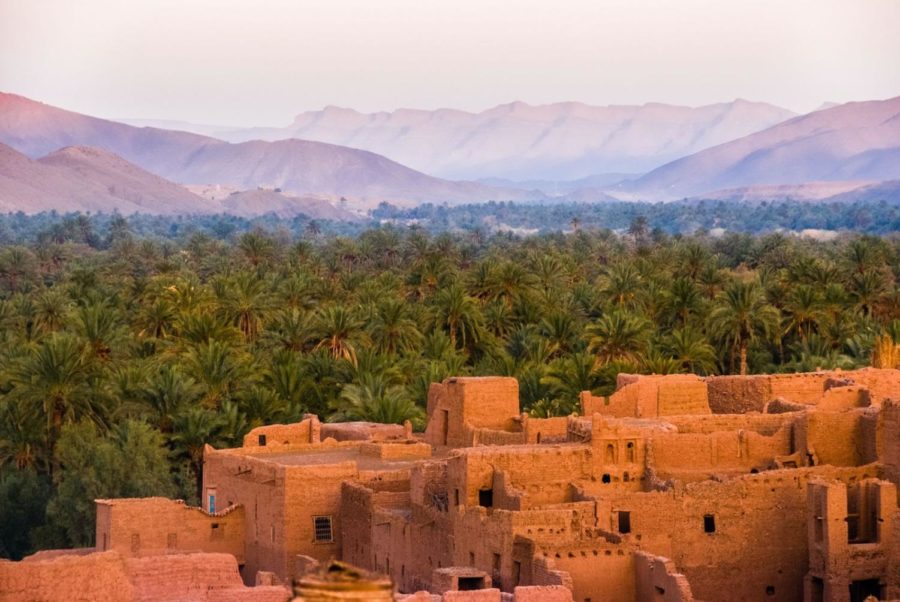Exploring Local Cuisine with Food Travelogues
Food travelogue programs combine traveling with a fascination for regional food into a story about the land and its people.
Photo by Sergey Pesterev on Unsplash
Gordon Ramsay visits Morocco, a country of varied geography, in the third episode of season 1 ‘Uncharted.’
“The name is Gordon James, not James Bond. I just want to pick mushrooms,” Gordon Ramsay states matter-of-factly as if his instructor had any trouble distinguishing a blonde, fifty-two-year-old British chef from a 007 Secret Service agent. Just seconds earlier, Ramsey met his guide, a mushroom hunter, at the Middle Atlas Mountains in search of fungi for his cook-off with “one of Morocco’s finest chefs, Najat Kaanache.” To his surprise, his instructor reaches for a harness and attempts to strap him up, but Ramsey just stands there, eyes searching, utterly dumbfounded. “But where are the mushrooms?” he asks. As it turns out, he will need to channel his inner James Bond to scale a waterfall cliff. Although the mushroom hunting grounds are a secret, the Brit jokes, “I doubt anyone’s following us.” I can’t say I disagree. Someone has to love mushrooms a whole lot to make the descent down a waterfall.
This scene comes from the National Geographic series ‘Gordan Ramsay: Uncharted’, a three-season show searching for “culinary inspiration, epic adventures, and cultural experiences” in “some of the most incredible and remote locations on Earth.” It features a chef better known for his short temper and foul mouth rather than his knowledge of local culture. Gordon Ramsay is a household name thanks to his appearance in competitive cooking and hospitality management programs like ‘Masterchef’, ‘Ramsay’s Kitchen Nightmares’, and ‘Hotel Hell’.
‘Uncharted’ presents a sweeter side of the Michelin-star restaurant owner; he shows genuine interest in learning about the indigenous way of life as opposed to his usual rampages towards chefs-in-training. For instance, in Peru, he lassoed a cactus from the top of the Sacred Valley for the amazing delicacy inside — worms. The scene is reminiscent of Disney’s ‘Lion King’ when Timon and Pumbaa crack open a log to reveal the plump, juicy, and “refreshing” selection of grubs. Later that day, he tried roast Guinea pig, an animal I’ve seen more in household cages than on dinner plates.
While Ramsay’s love for profanity remains, it is balanced with an obsessive number of “delicious,” “amazing,” and “simply gorgeous” — phrases he uses sparingly in his other shows.
The food travelogue is a ‘Parts Unknown’ meets Bear Grylls type of show; Ramsay attempts all sorts of life-threatening missions in the pursuit of expanding his culinary knowledge. In Alaska, he climbs a sixty-foot cliff that more closely resembles an erect pillar for ‘old man’s beard’ (a type of fungi). In Hawaii, the danger lies in the journey itself as he navigates the windy, flooded roads of the Hana Highway to meet a local chef. In Laos, he must conquer the Mekong River, the lifeline that nourishes the country’s people with food, drink, and spirit.
The Laos episode is my favorite of the season. Ramsay starts by meeting his international cooking rival as per usual, and this time, a short boxy-faced cook with childlike features greets him. He is known as Joy, and he is an absolute joy to watch. The Lao chef has a judgmental resting face that makes him look like he is constantly squinting at the sun. Moreover, his mannerisms remind me of Guillermo from the American late-night talk show ‘Jimmy Kimmel Live!’ or the woodchopper in Henry David Thoreau’s ‘Walden’ with his direct way of speaking.
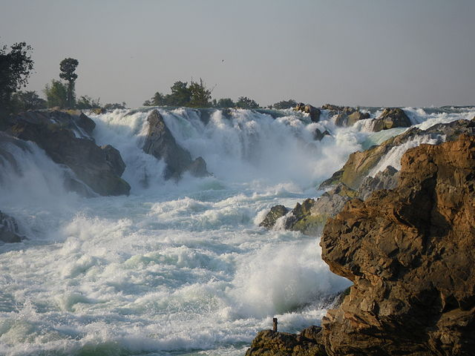
The two stand facing the open rapids of the Khone Falls, the widest waterfall in the world with 2.5 million gallons of water coursing over the rocks per second. Across from them, a native fisherman casts his net with ease even though he stands inches away from the churning current. When Ramsay asks if it is dangerous, Joy casually says, “not really.”
The Brit begs to differ; in Ramsay’s mind, the fisherman has been “risking his life — sorry — catching these prized Mekong fish for decades.”
The television personality then attempts to take on the role of the experienced fisherman by standing on a lone rock on the inner shore of the river. The water crashes below his feet in an attempt to break through the stone impediment before quickly receding and pushing forward again with greater velocity. With no safety harness or life jacket, it’s a relief Ramsay has good balance. After several failed trials and becoming bored of playing with fate, Joy cheekily reveals that it’s not even the right time of day to catch fish.
Over the course of a day, Ramsay kayaks across the tumultuous Mekong, survives a “partial poisoning” after consuming a drink make from gecko, and for a change of pace, washes rice in the river. The pair submerges the lower half of the bamboo baskets in the shallow part of the Mekong; the basket acts as a colander with the river as their basin. The river seems to add something special to the rice, enveloping each grain with its vitality.
While watching ‘Uncharted,’ I couldn’t help but be reminded of the food travelogues of my childhood. As a kid, my father frequently put them on the television for passive enjoyment as he occupied himself with a movie on his phone. Frank Bruni from ‘The Atlantic’ explains in ‘An Expert’s Theory of Food Television’s Appeal’ that the popularity of food programs stem from this passive entertainment. He compares it to ambient “visual music,” which provides the viewers with a detached resting experience that doesn’t require focused energy. Its meditation in mindlessness (not mindfulness) for those less inclined on finding spirituality but rather a moment of calm. A stream of glossy, vibrant dishes accompanied by the tugging of violin strings filters through our brains. Bruni writes, “I sit at the nearby computer while, just 12 feet away, chops are being grilled and vegetables sautéed and potatoes mashed. Is this footage not so much exhorting me to the stove or priming my appetite but, in some corner of my brain, simply putting me at peace?”
That being said, food travel shows are not just for passive viewing only; they can sometimes reveal great truths about culture, nature, and change. One show I remember is 2012’s ‘A Bite of China’. It is a highly acclaimed series of seven 50-minute episodes, the collaborative work of thirty renowned filmmakers. The series was very well received, garnering over 100 million views during its nightly airing, and has an approval rating of 91% on Douban, a Chinese social networking service website. The show is best at not only reminding viewers who are far from home of their origins but also exposing them to unfamiliar indigenous cuisine and lifestyle.
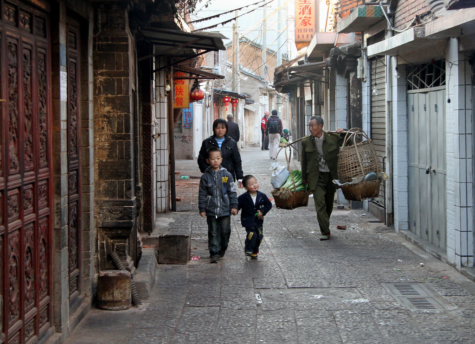
Episode three ‘Inspiration for Change’ predominantly features tofu and other soybean-based products. It opens with the Daban Well in Jianshui. The well sits inside a village square, closed off by old, one-story houses on each side. To highlight its importance, the ground surrounding the well is cut in such that villagers would need to use a set of descending stairs to reach it. In the square, the women set up a production line of tofu, utilizing the enticing cold and clear water in each step.
The residents drop their colorful buckets into the brimming well which quickly fills with the pure, glassy liquid. The pails, heavy from the extra weight, pinch in on themselves at their points of contact with the rope, forming an elliptical opening as it is drawn up to the surface. The clarity of the water and the fullness of the well grants the square a magical quality, almost as if it were the gateway to a higher state of being. The unseen narrator recites, “Local residents are well-versed with water. The Chinese believe that water nourishes the spirit and minds of the people.”
In Shaoxing, life moves at an even slower pace. It is a river community, well-known for its yellow rice wine. The viewers observe a sacrifice to the god of wine — a smiling, beheaded pig, with its snout pointing up eagerly towards the heavens. We are told that “even the best winemaker can’t ensure that he can brew the best wine every year due to the capricious weather, wind, air, and fungi.” The food docuseries depicts the overarching influence of nature on our daily lives. The livelihood of the Shaoxing people is at the mercy of natural conditions.
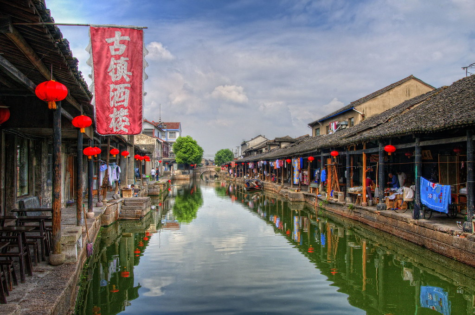
‘A Bite of China’ dives even deeper into Shaoxing and explores one of its ancient towns, Anchang. A river runs through the community like a narrow canal, and the history-rich dwellings line both sides. A connected patio-like roof extends over all the houses, creating a shielded walkway for the townspeople to converse and play games. Andy (last name not stated), a photographer capturing his journey across the different provinces of China, writes, “Maybe that’s why I feel Shaoxing is very raw. Many buildings and structures are not refurbished, and are just left as they were.”
The town’s famous sausage is strung along the “patio-like roof” in a barbed wire pattern. The flavor derives from the locally brewed soy sauce. At fifty-six, Ding Guoyun, a town resident, still works tirelessly to produce the dark sauce. He mounts the broad rim of the enormous jars to stir the thick dip to ensure an even fermentation throughout. He masterfully steps from one jar to the next, but I wonder if he has ever fallen into one of them.
‘Once Upon a Bite’, a documentary produced by the same director, further explores the relationship between the local people and their source of subsistence. The audience follows a group of Kazakh herders, a nomadic Turkic ethnic group. While it may sound barbaric of me, my favorite scenes are the ones where they cut through large slabs of meat or show miscellaneous body parts. One of the older herders slices the freshly killed horse meat into multiple sections and then hangs the slabs onto a square wooden frame in the hut. The lean, purple blood-and-oxygen-rich meat dangles from the frame like drying laundry. Fire smoke rises upward from the center of the square, creating a compelling yet wild scene.
The best sequence follows the dissection of a pig in an unnamed town. Although we don’t see any of the real butcherings, a single fatty leg is shown. A large chunk of the pig’s thigh is still attached to the hock hind feet. The plump fleshy deadweight lay heavily on the cooking table as villager Wang massages a year’s worth of salt into it. After more than a month of curing the ham, it is dried in the sunlight. There is a gorgeous shot that depicts rows of legs hanging from their trotters. They look like ballerinas or synchronized swimmers, shooting their stout limbs straight towards the sky.
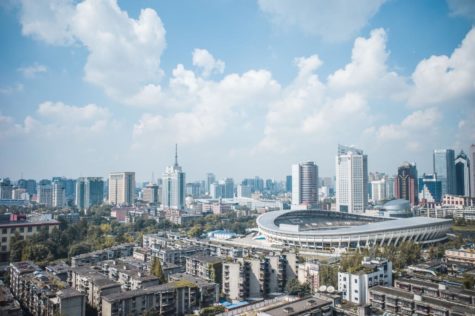
Food docuseries provide insight into various cultures, but they can be used to document change as well. In ‘Exploring China: A Culinary Adventure’ (2012), the culinary duo Ken Hom and Ching-He Huang examine the effects of modernization on the Sichuan province and its food. Hom says, “China is a country full of contradictions: tradition and innovation sit side by side.” The duo visits a fly restaurant in an old part of the city due for redevelopment. According to Hom, the capital Chengdu is under an economic ‘go-west’ policy where it would receive 300 billion dollars to spark an economic boom. When he visited in 1989, he claims that it was still a fairly “primitive place” with its dirt roads and hand-drawn carts. The tallest building was an eight/nine-floor hotel. As of 2012, the capital has a population of 14 million and the fastest rate of urbanization worldwide. Hom expected change but not to this extent. Looking back in 2022, “Chengdu is now one of the most important economic, financial, commercial, cultural, transportation, and communication centers in China.” There is a melancholy that surrounds that statement. Sichuan might as well be the messenger of time. However, even as the economy and city layout change, the Sichuan people’s signature ingredient — hot chili peppers — remains constant.
As the episode played, I was reminded of other areas that faced the same redevelopment. For the first five years of my life, I lived in China in a town square with my aunt. There were horse-drawn carriages, cobblestone paths, and a vibrant market selling tea eggs, DVDs, and groceries. Nosy neighbors knew everything that happened in the neighborhood. But, a recent photo of the area now shows high-rise buildings and apartments. The size of the walk paths grew smaller and the layout neater and more compartmentalized. I’m willing to bet that the market was replaced by a conventional supermarket as well.
Food travel programs have a lot more to teach than just recipes. In ‘Uncharted’, viewers become more open to delicacies that one may find unappealing. ‘A Bite of China’ and ‘Once Upon a Bite’ detail the lifestyle of various groups of people living on mountains, in villages, and near rivers. These shows highlight the diversity in our food sources and celebrate its origins. Others like ‘Exploring China’ analyze the passage of time on our diet as innovation pushes against tradition. Food is arguably the most important factor in one’s life in terms of survival, culture, and historical documentation. After all, we are what we eat.
Andy (last name not stated), a photographer capturing his journey across the different provinces of China, writes, “Maybe that’s why I feel Shaoxing is very raw. Many buildings and structures are not refurbished, and are just left as they were.”
Nicole Zhou is the Editor-in-Chief for ‘The Observatory' yearbook and a Staff Reporter for 'The Science Survey' newspaper. This is her third year revising...

